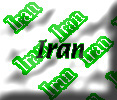Bashiri Working Papers on
Central Asia and Iran
prepared by
Professor Iraj Bashiri
| | e-mail: bashi001@umn.edu |
 |
 |
 |
 |

|

|
 |
 |
|
Republic Overviews
Autonomous Regions
|

|
Republic Cities
Flags of the Republics:
|
| The Shahname of Firdowsi appeared at a crucial juncture in the history of Central Asia, when two and a half centuries of Arab domination of the region was giving way to the overlordship of the Turkish chieftains of the steppes. Firdowsi's Shahname: 1000 Years After . underscores Firdowsi's contribution to the revival of the Persian language; his emphasis on the Zoroastrian principle of free will, i.e., that the individual, rather than either the state or the religion, decides the path of social and spiritual advancement; and, most importantly, his reiteration of the concept of the divine right of kings. This latter concept is examined in great depth in The Role of Farr in Firdowsi's Shahname. | 
|
|
The pre-history of Iran from creation to the kingship of Luhrasp is
examined in Firdowsi's Shahname:
1000 Years After . Indeed, King Kaykhusrau foresees the coming
of the Prophet Zoroaster and the Dawn of a new Day. From
the Hymns of Zarathustra to the Songs of Borbad examines the
history of the Iranian peoples from their early Indo-European days to the
fall of the Sassanian Empire to the armies of Islam. A cultural history
of the region, it examines the accomplishments of Cyrus the Great, Darius
the Great, and Xerxes I as well as the impact of Alexander's invasion and
of Hellenism on the region. The efforts of the Parthians and the Sassanians
were expended mostly on warding off the cultural hegemony of the west, a
policy that left the nation bankrupt and unprepared to defend itself against
an unexpected invasion from Arabia. In time, after the invasion, the Arabs
and Iranians settled their differences and allowed the two cultures to interact.
Iran and Islam to A.D.
1400 is an account of some of the factors that united the Iranians
under the banner of Shi'ite Islam. |

|
Essays on the Music and Literature of Central Asia and Iran
Edited and Translated by Iraj Bashiri:
Gulsurkhi, Iraj, Music in the Shahname Akhavan-Sales, Mehdi, Our Music (In Memory of Sadeq Hedayat) Huma'i, Jalal, Taj-i Isfahani Kan'ani, Nasir, Another Look at Traditional Persian Music Ja'farzada, Khosrow, Contradictory Definitions Stunt the Growth of Persian Music at the International Level Shajarian, M. R., At the Side of Ustad Davami Isamatov, Ma'ruf, The Musical Culture of Iran at the Beginning of the Middle Ages Rajabov, Askarali, Historical Traditions of the Time of Rudaki Ya'qubshah, Yusefshah, The Image of Funerary Dances on Sughdian Ossuraries Nurjanov, Nizam, Constructive Customs in the Music and Dance of the Tajiks Rahmanov, Rushan, The Role of Surud in the Mughul Dukhtar Legend Azizova, Faraqat, Some Shashmaqam Puzzles in Tajik Music Ghafurbekov, T., The Thoughts of the Masters of Monody | ||
Home | Central Asia | Central Asia & Iran | Iran | Tajikistan Update